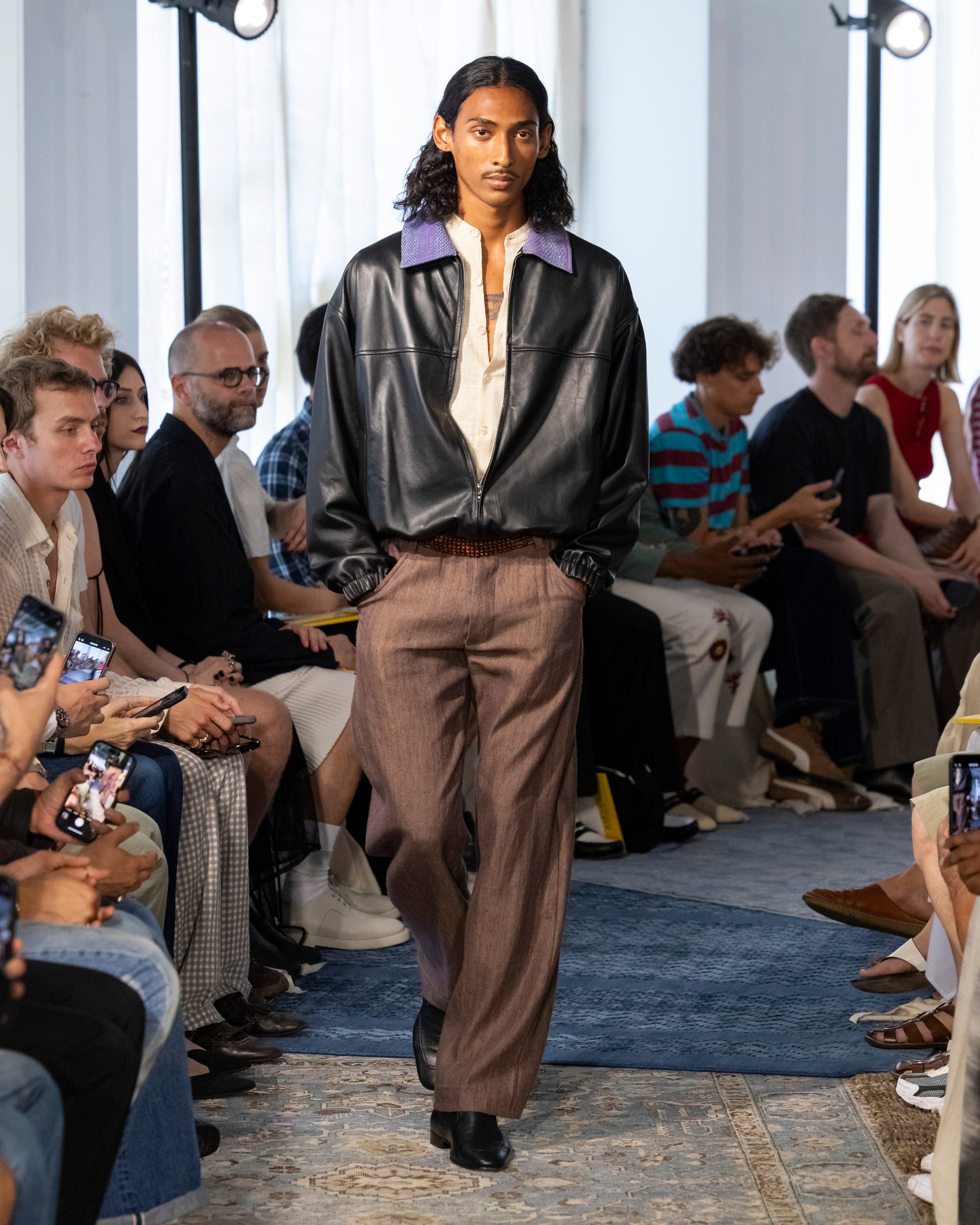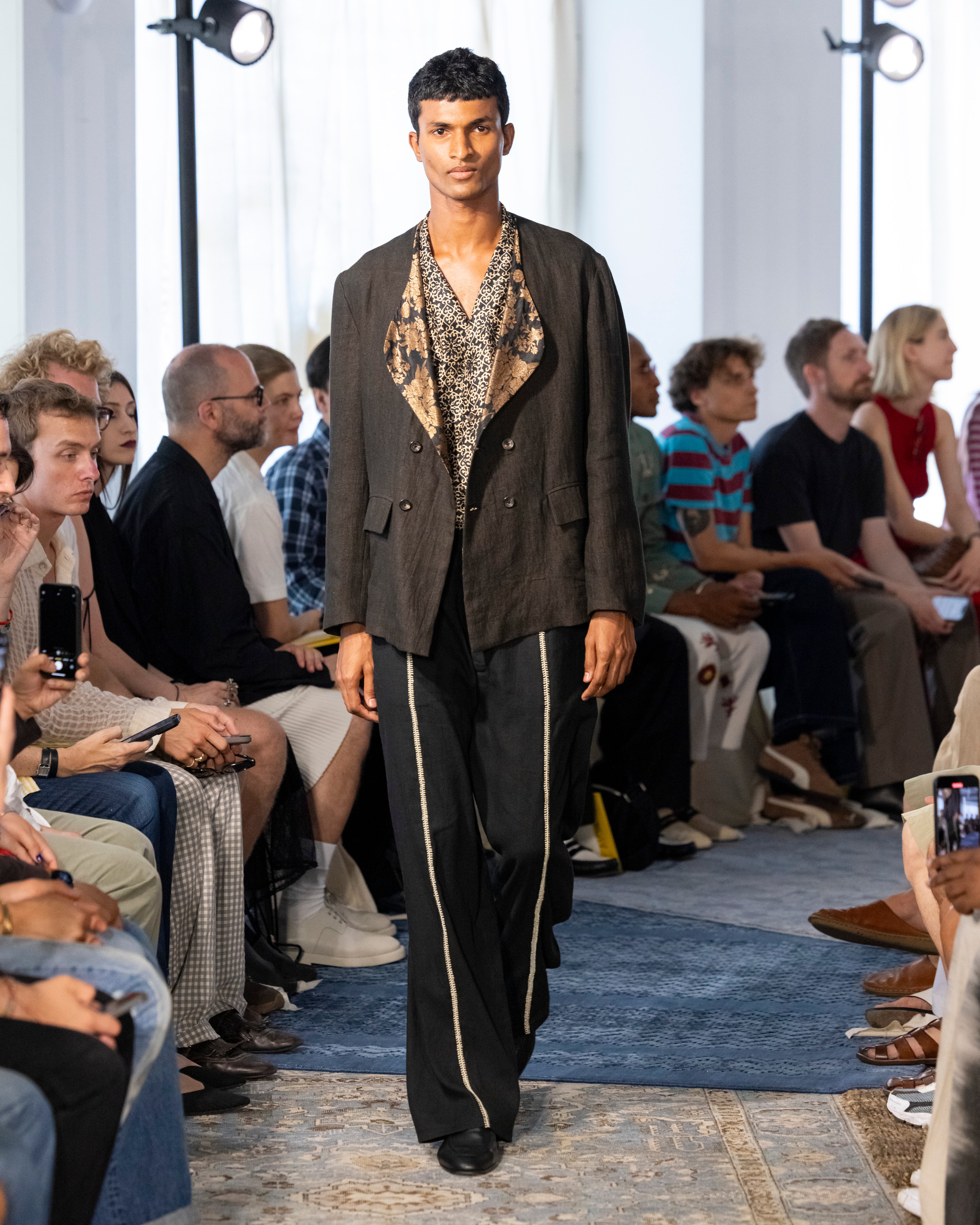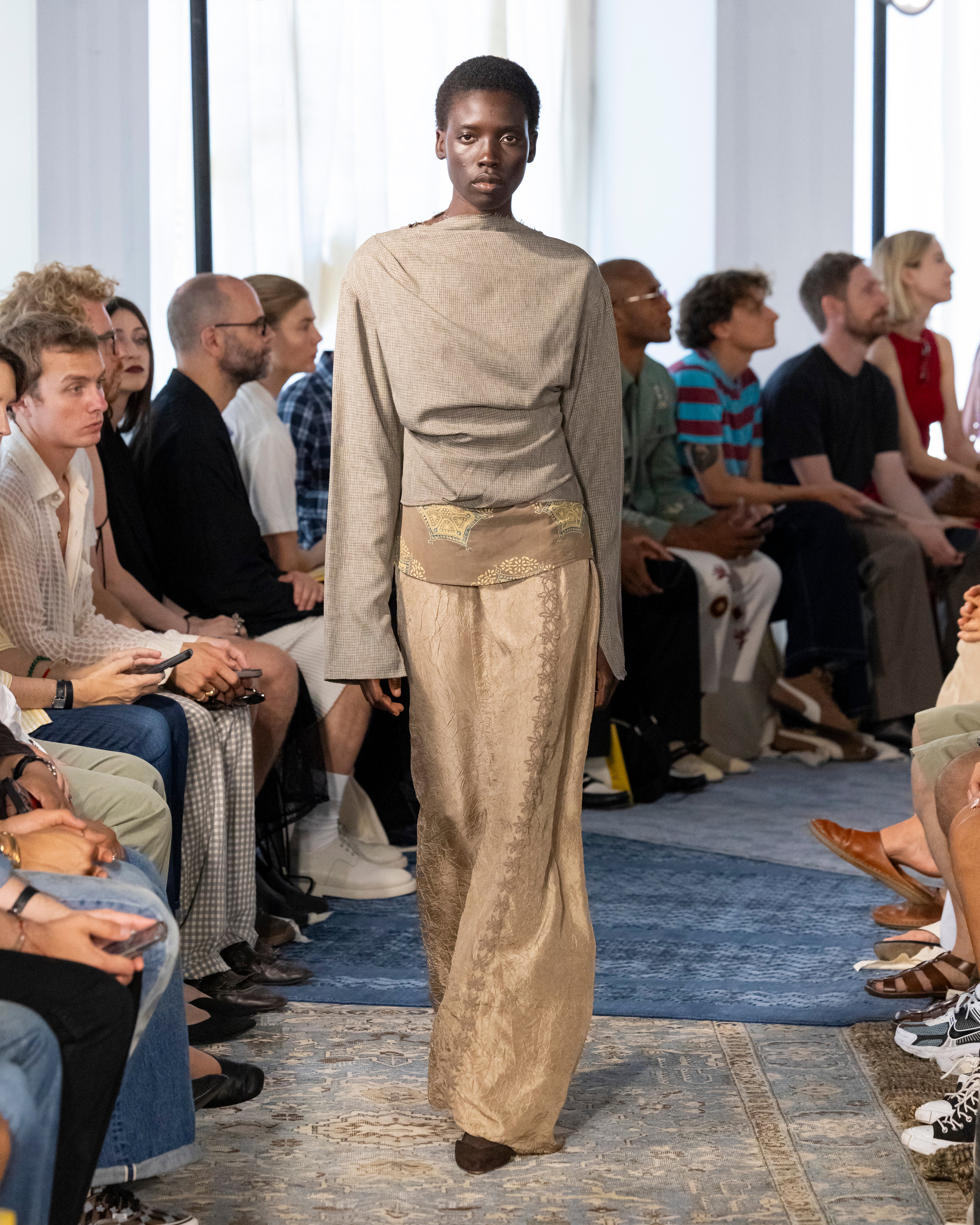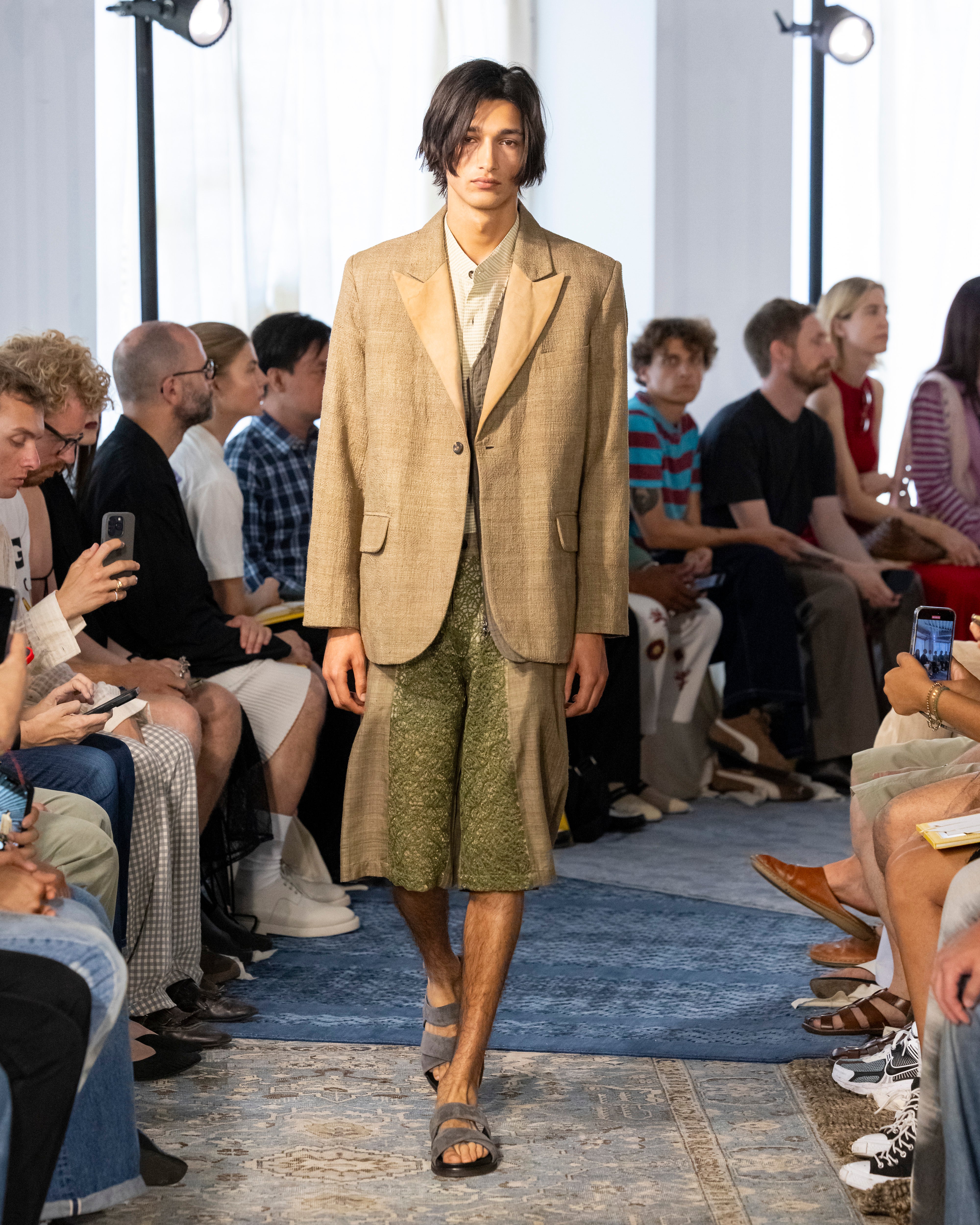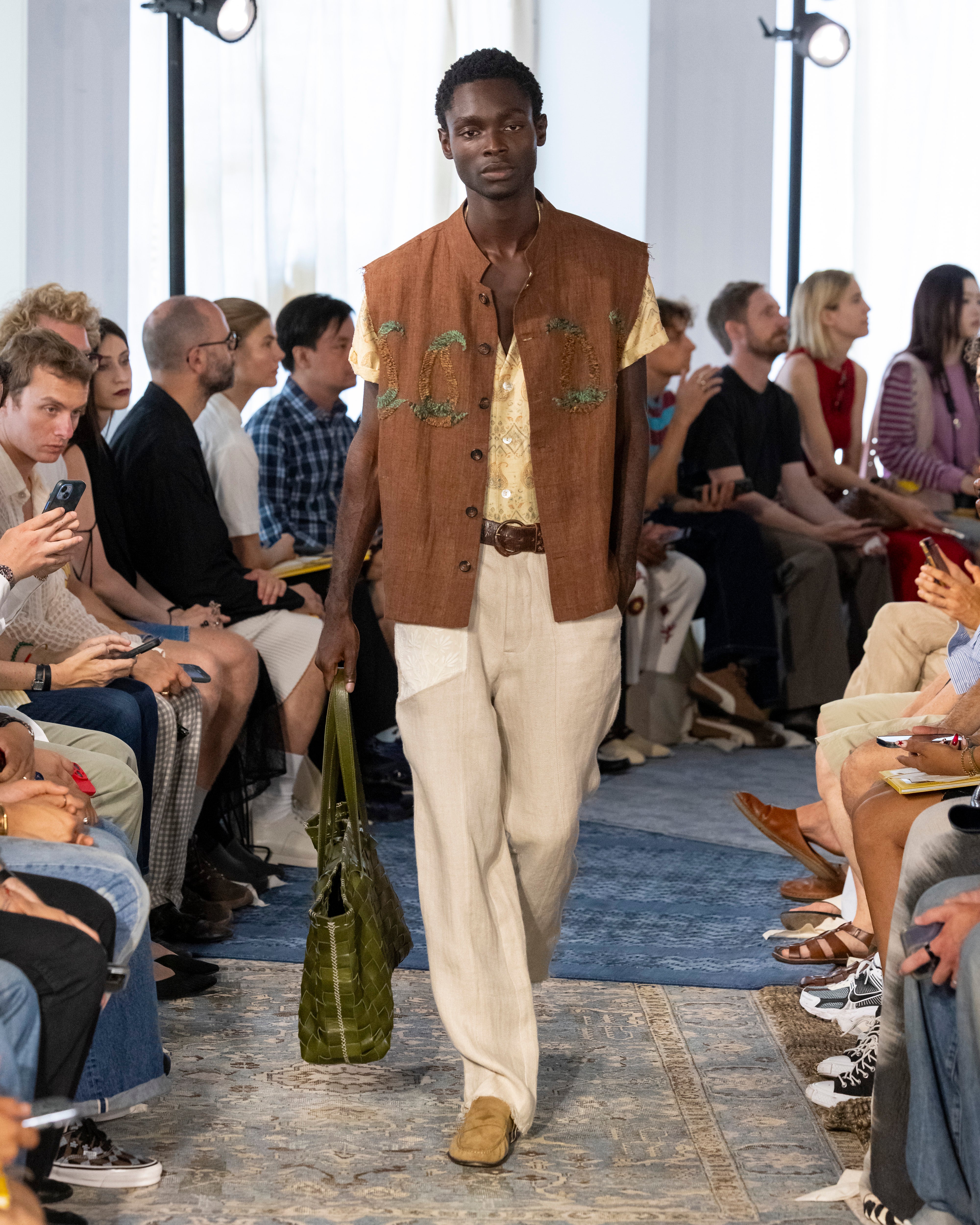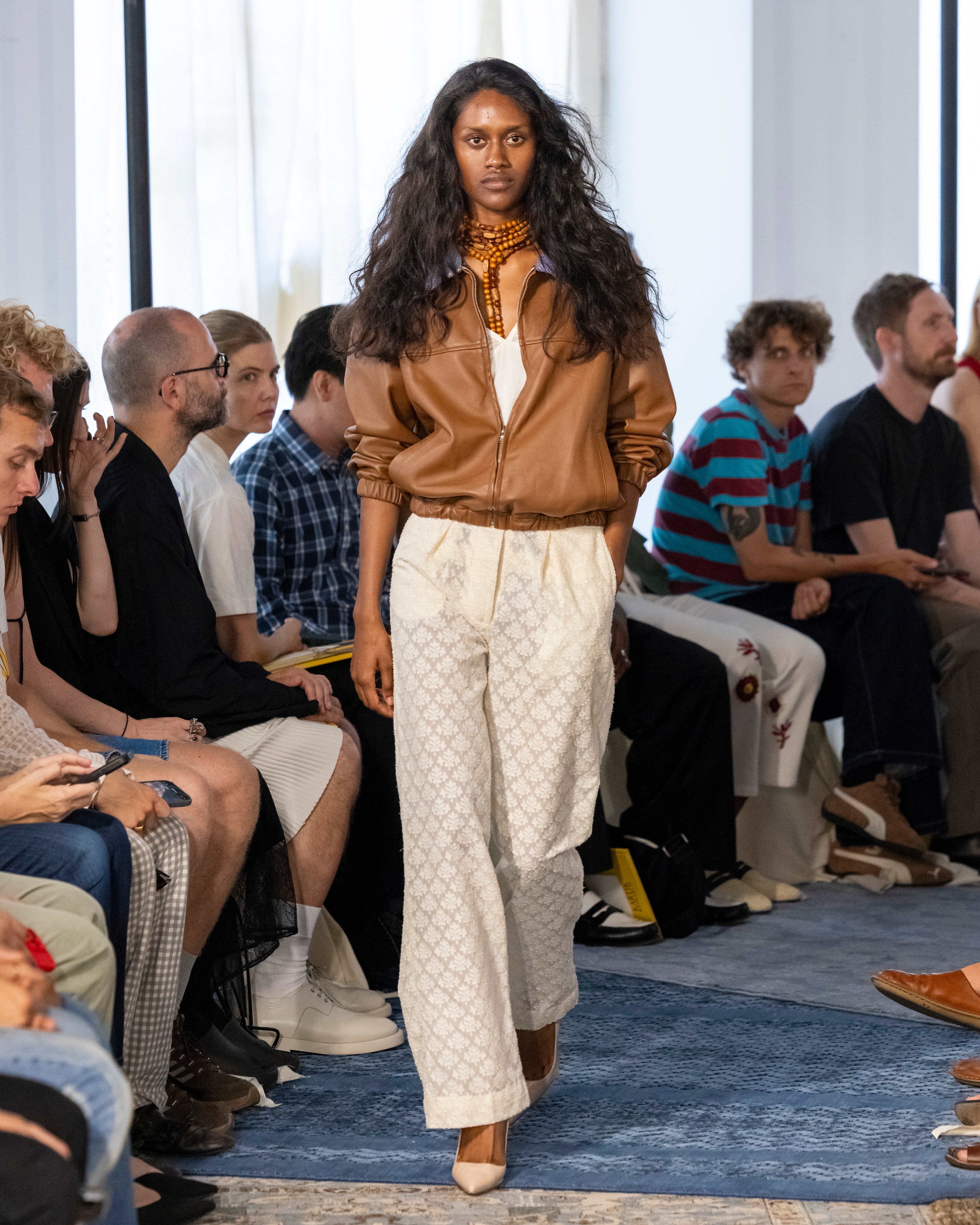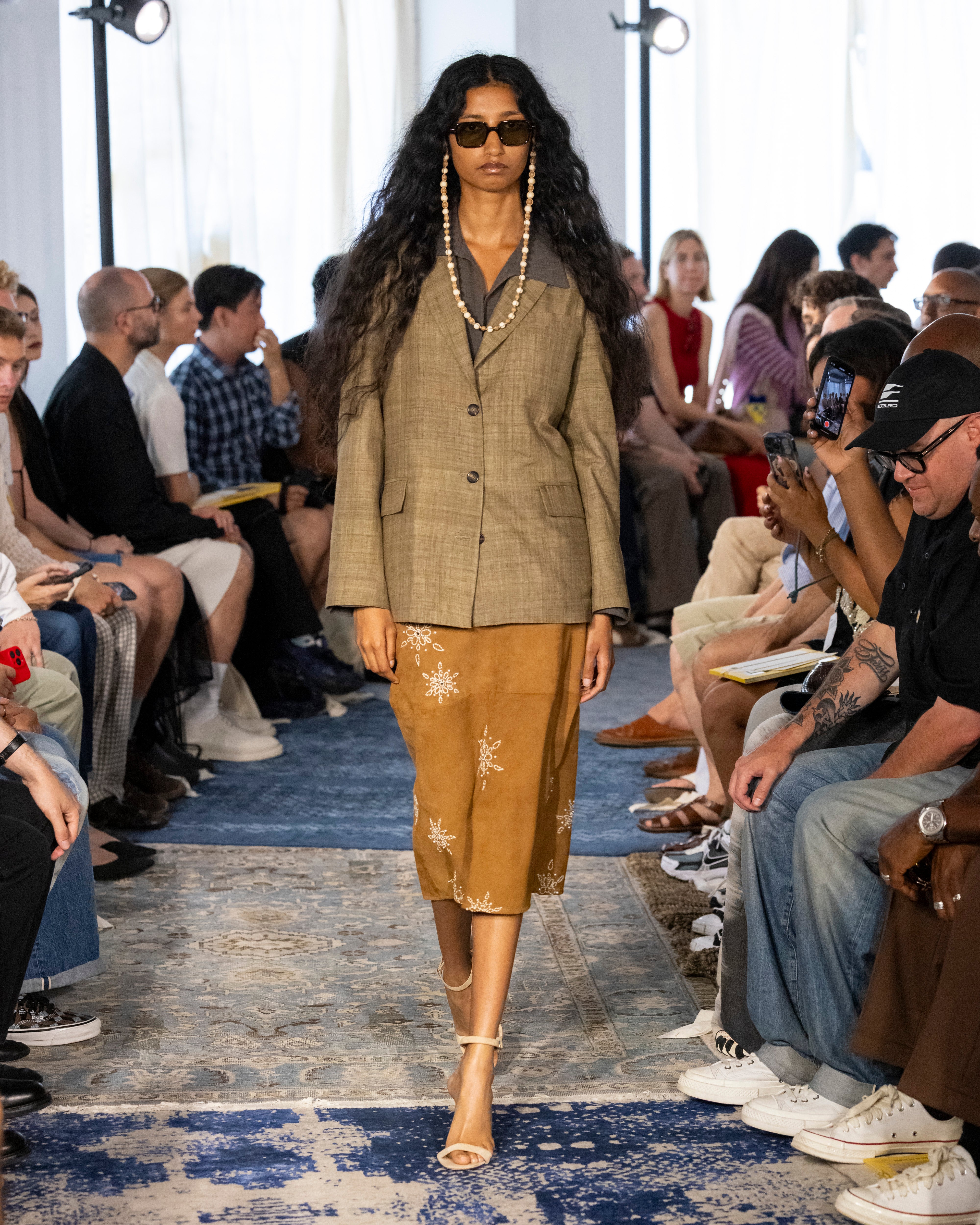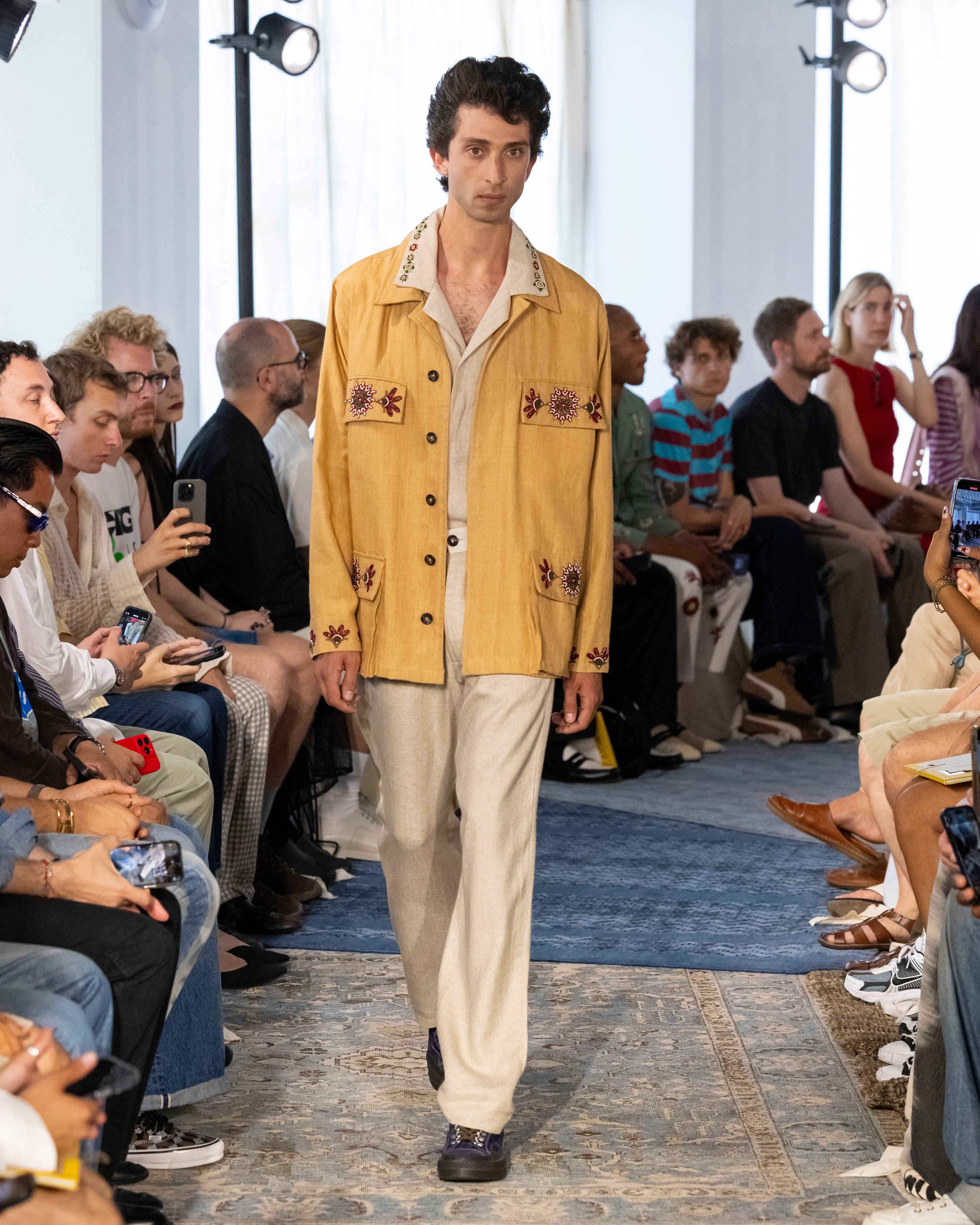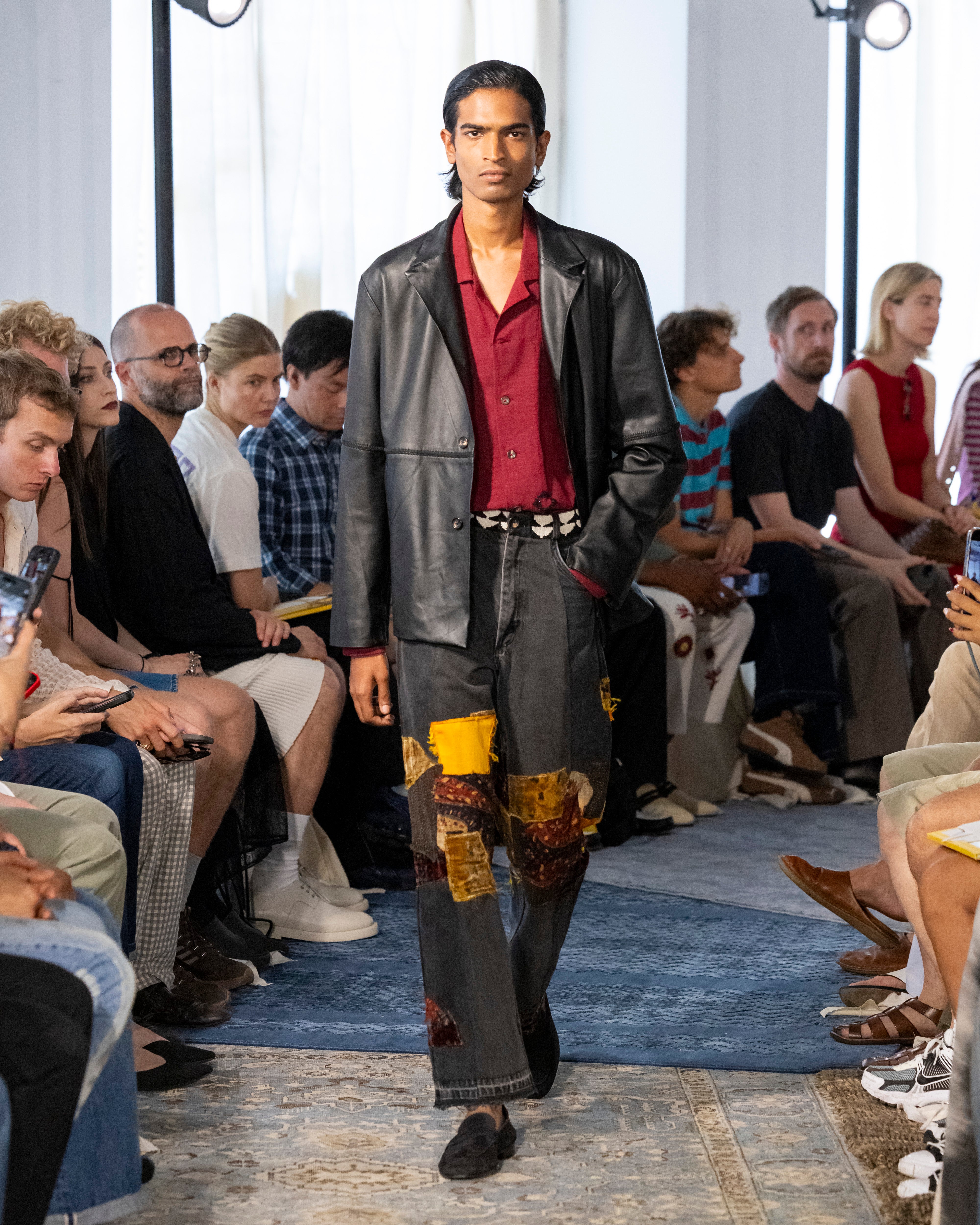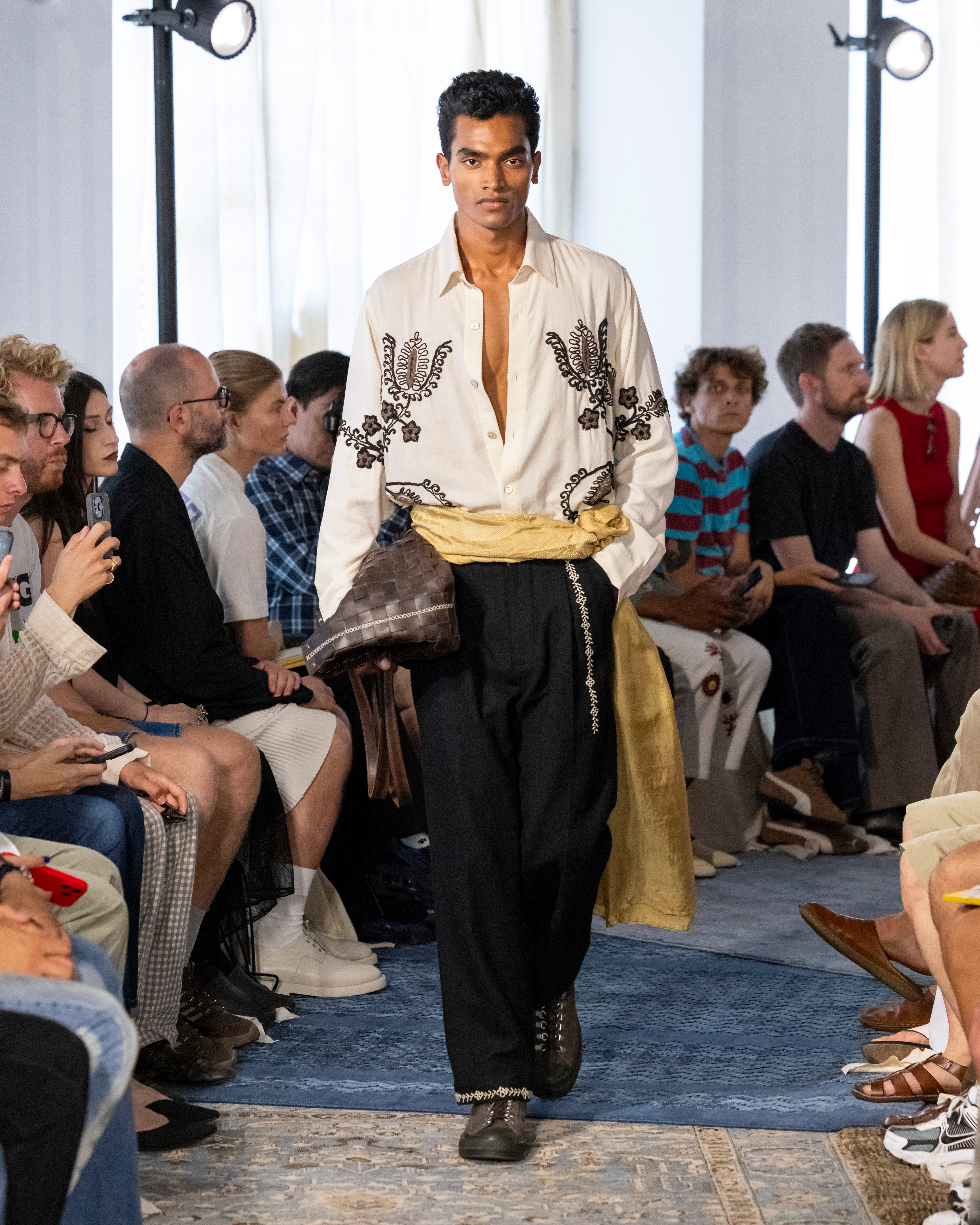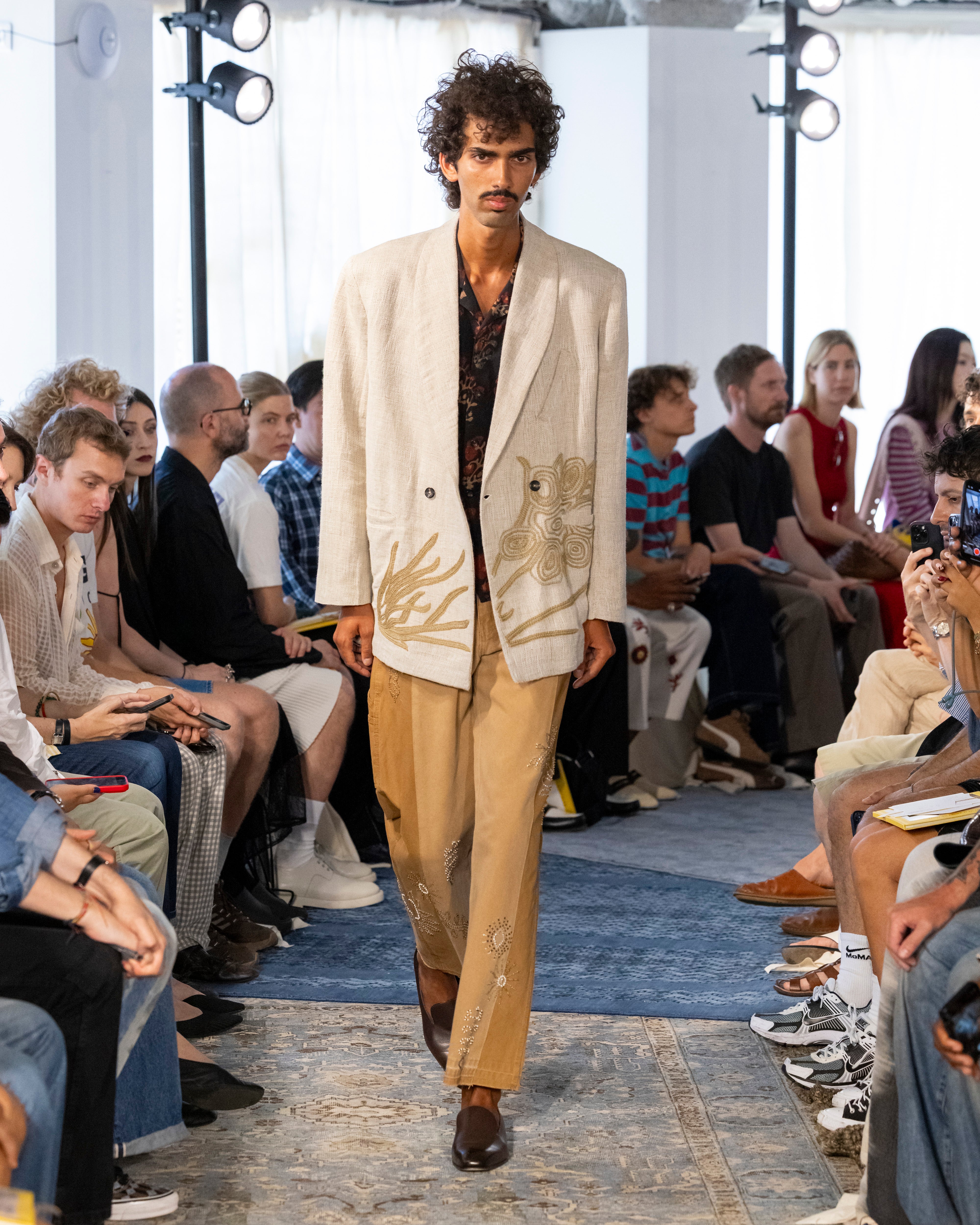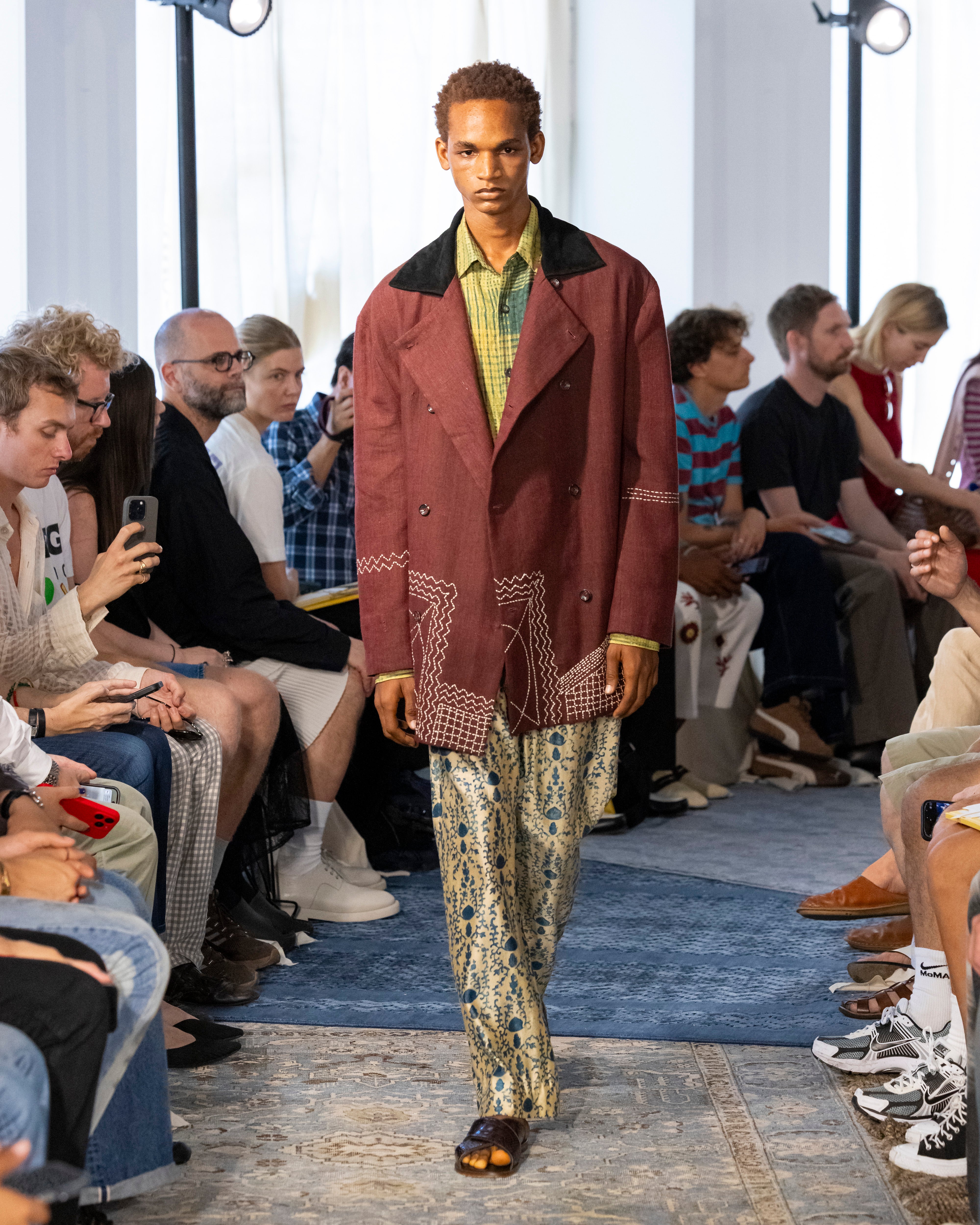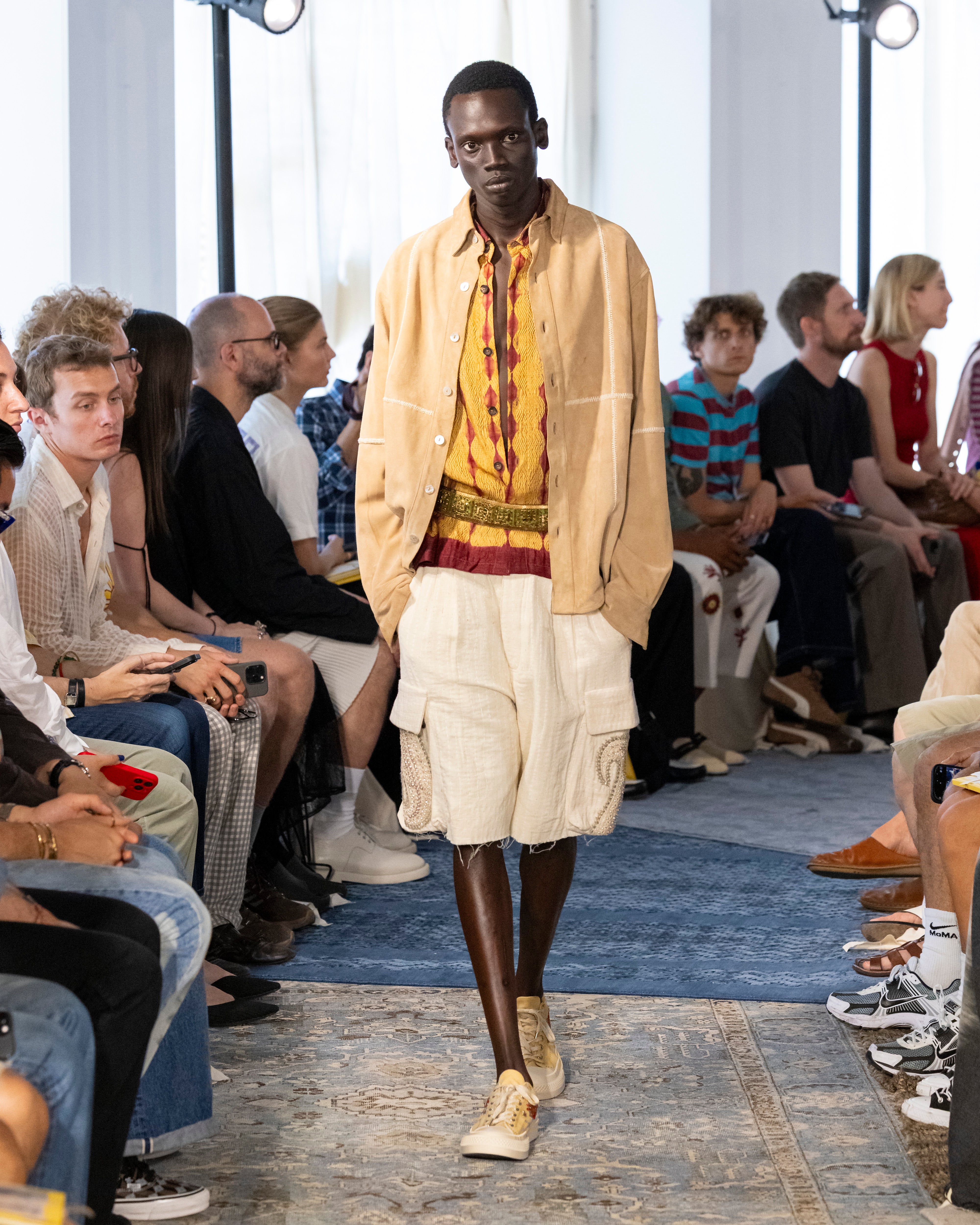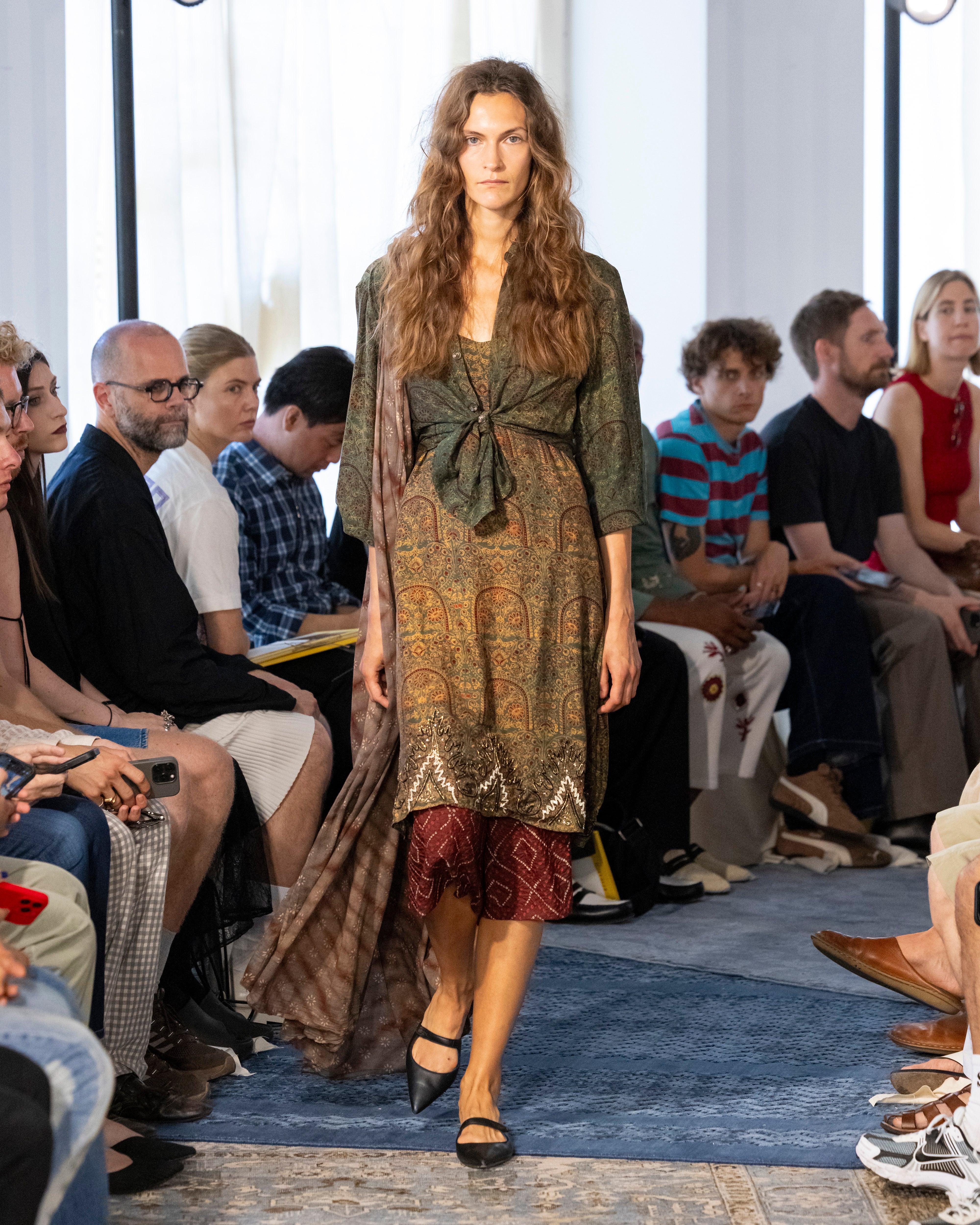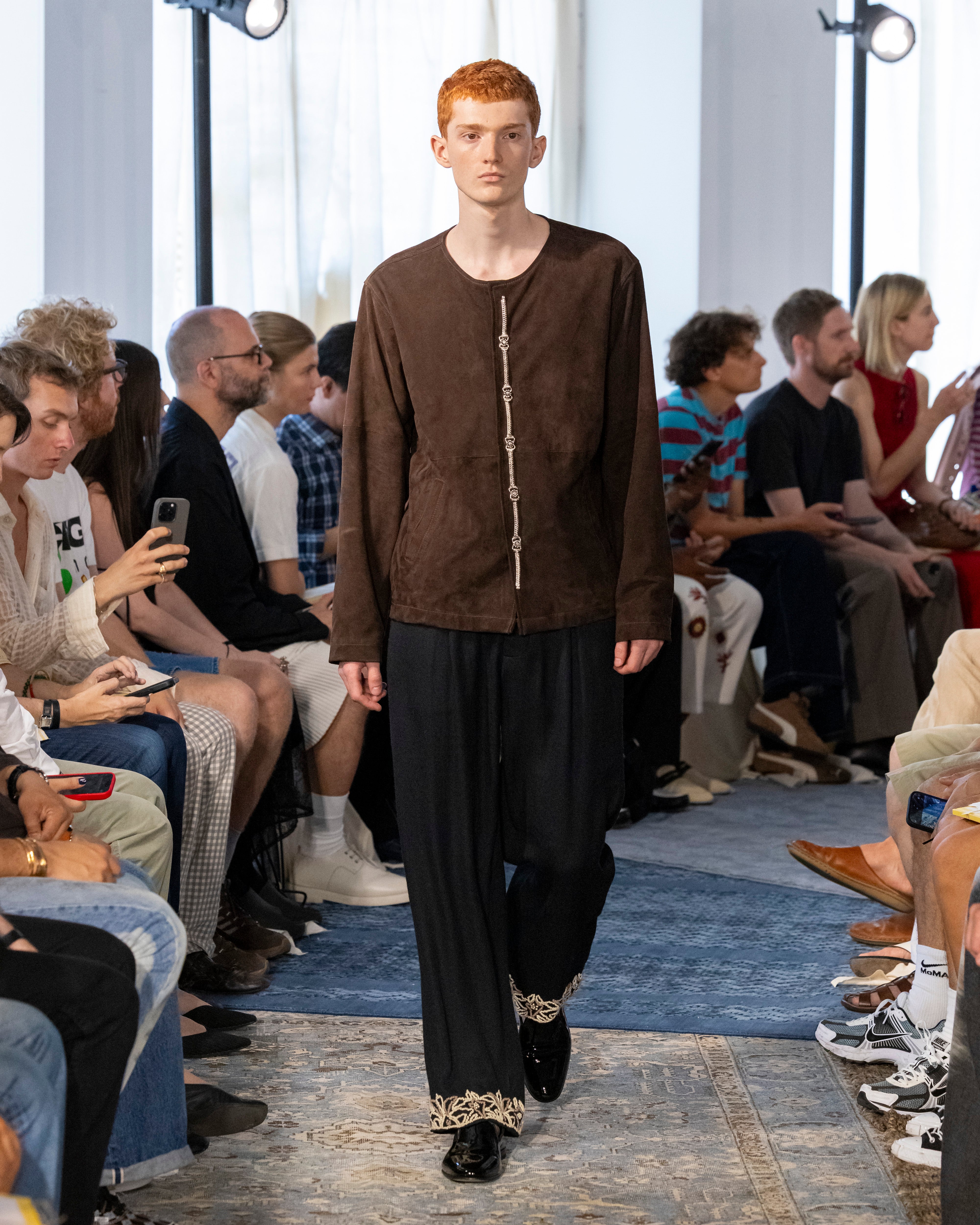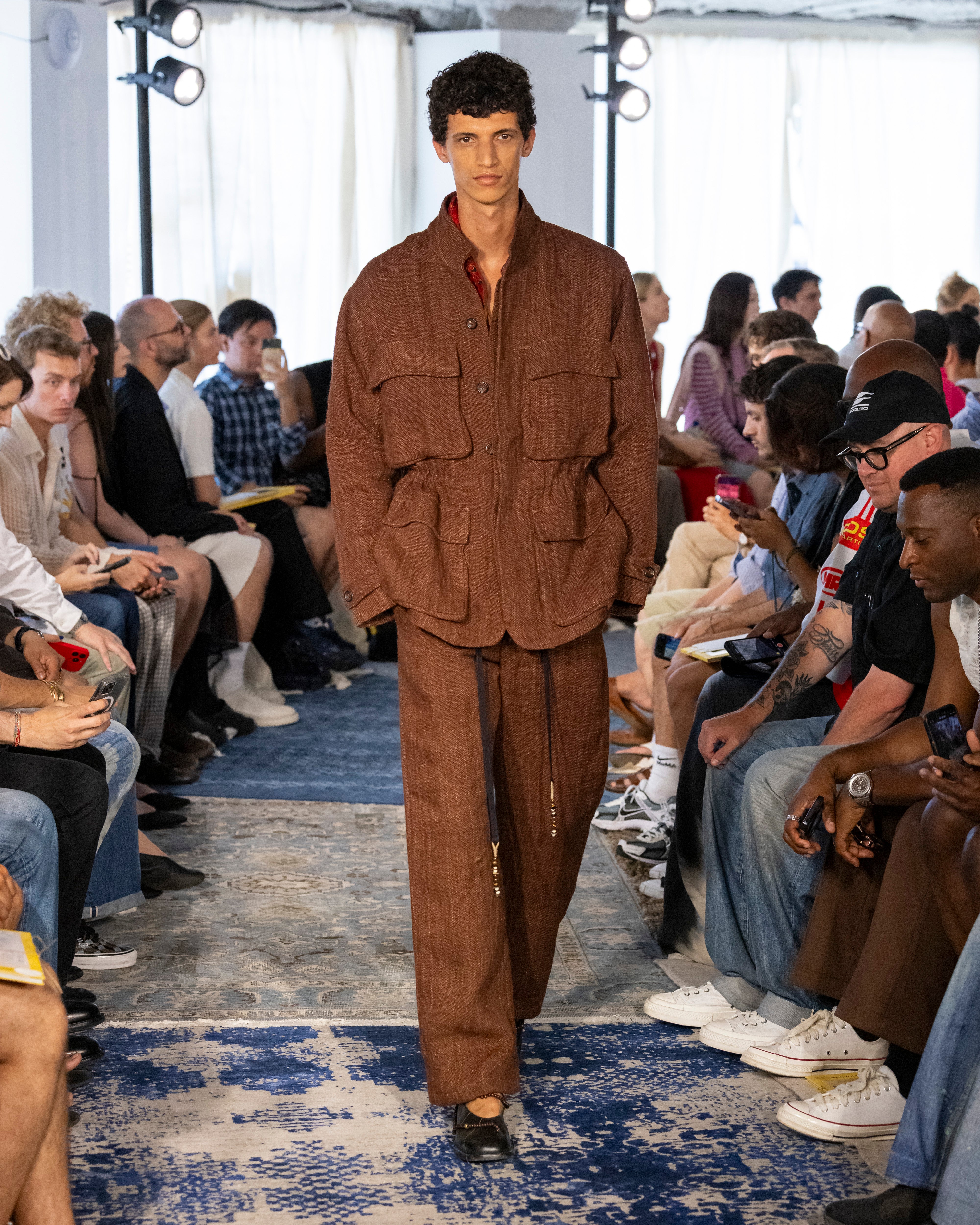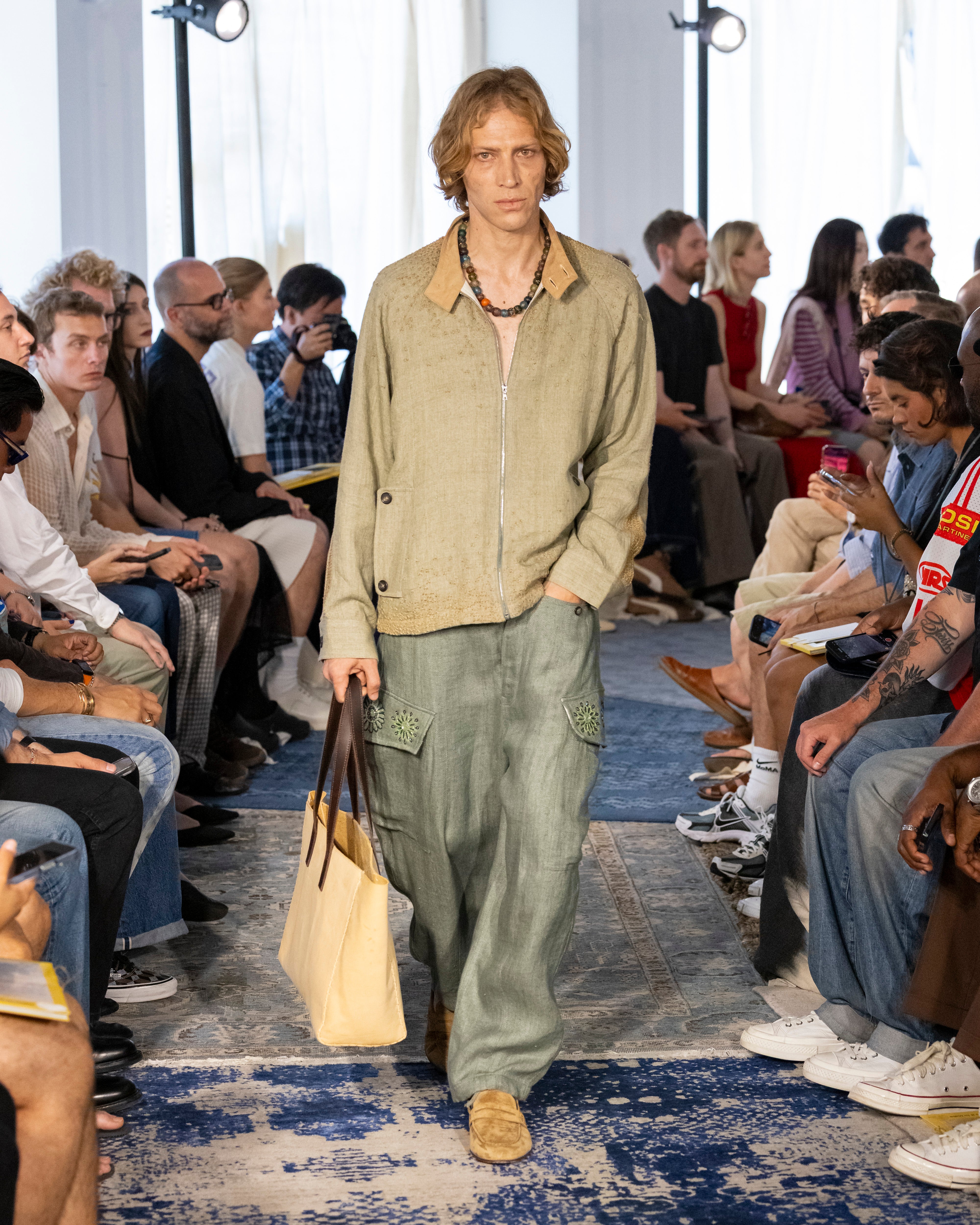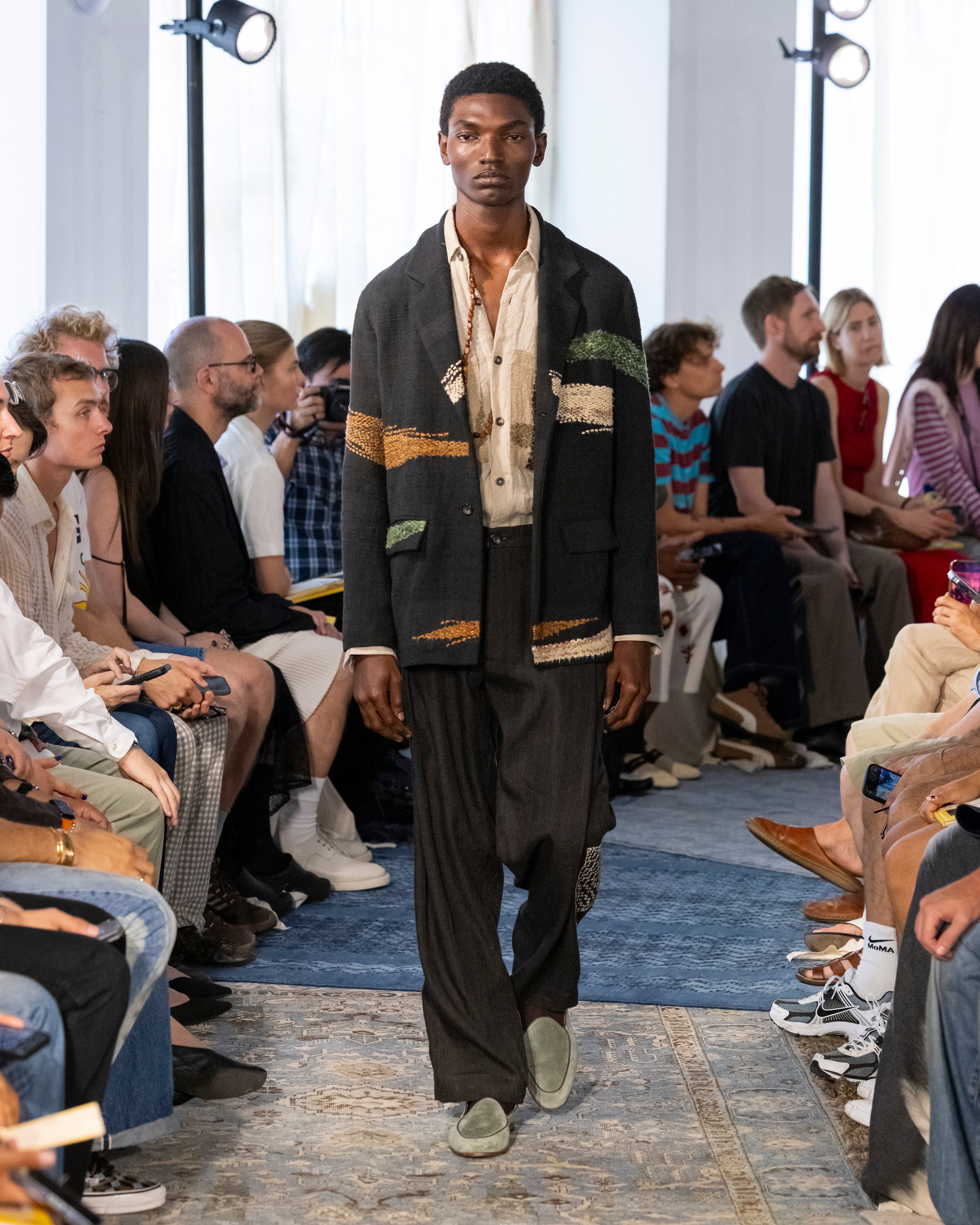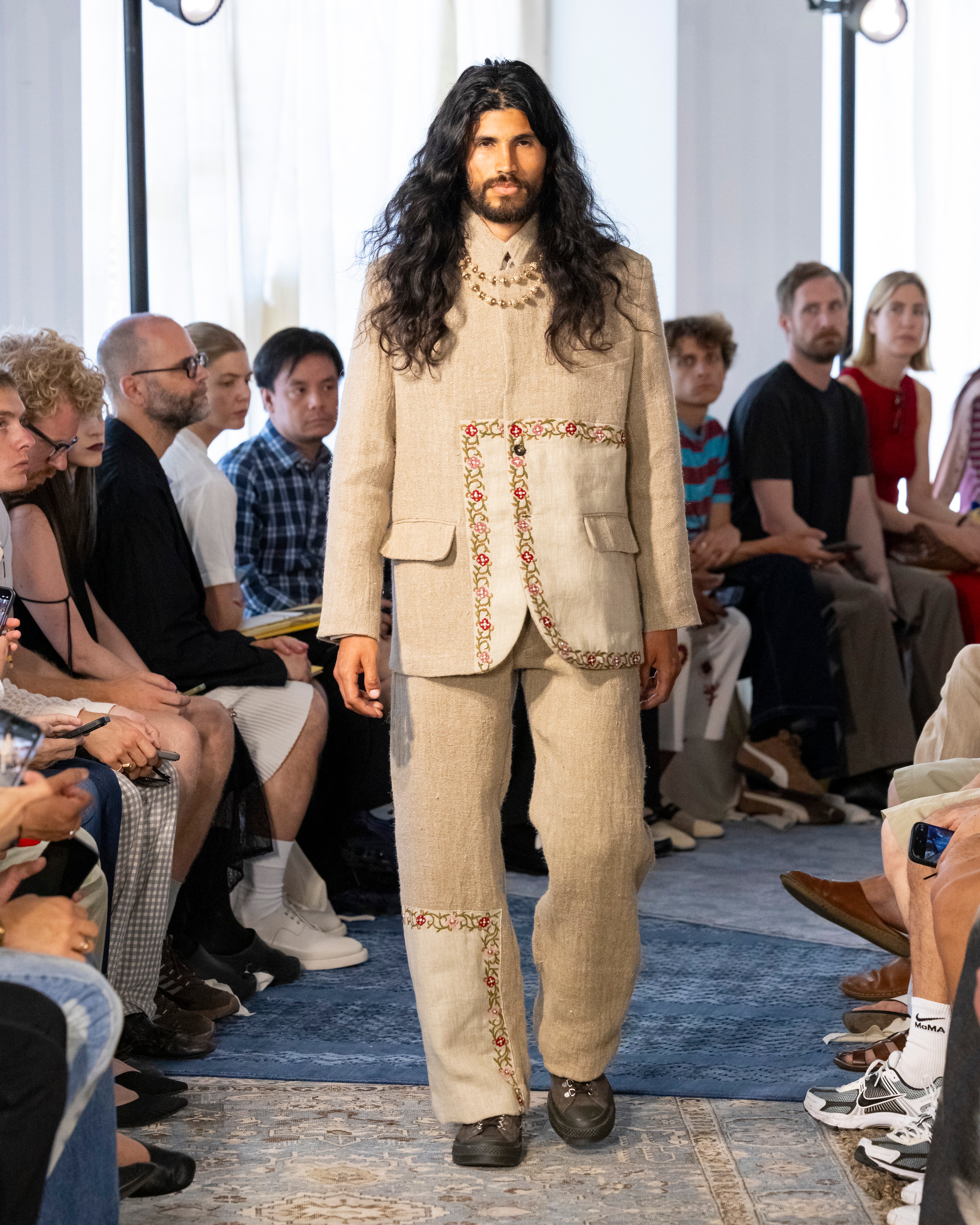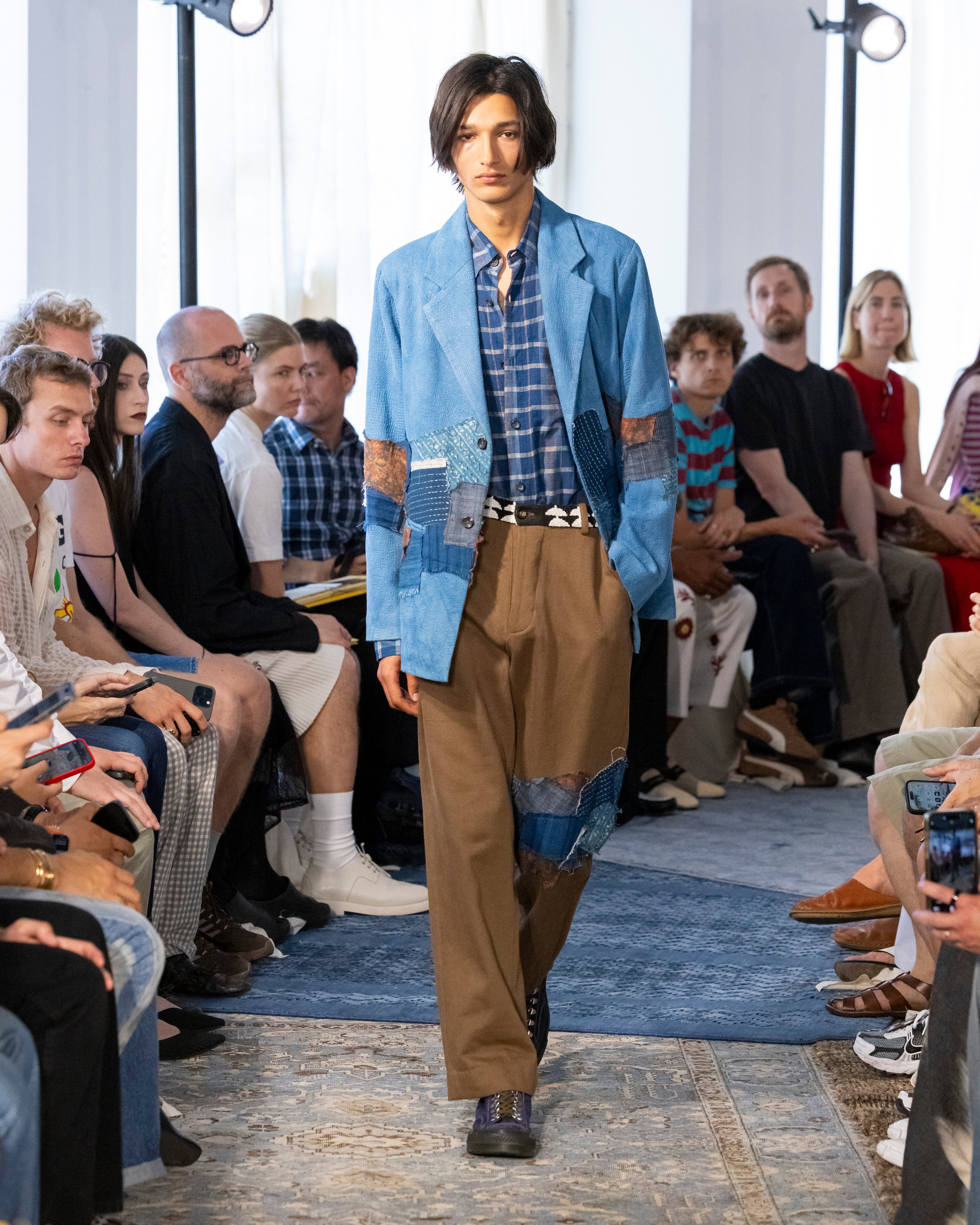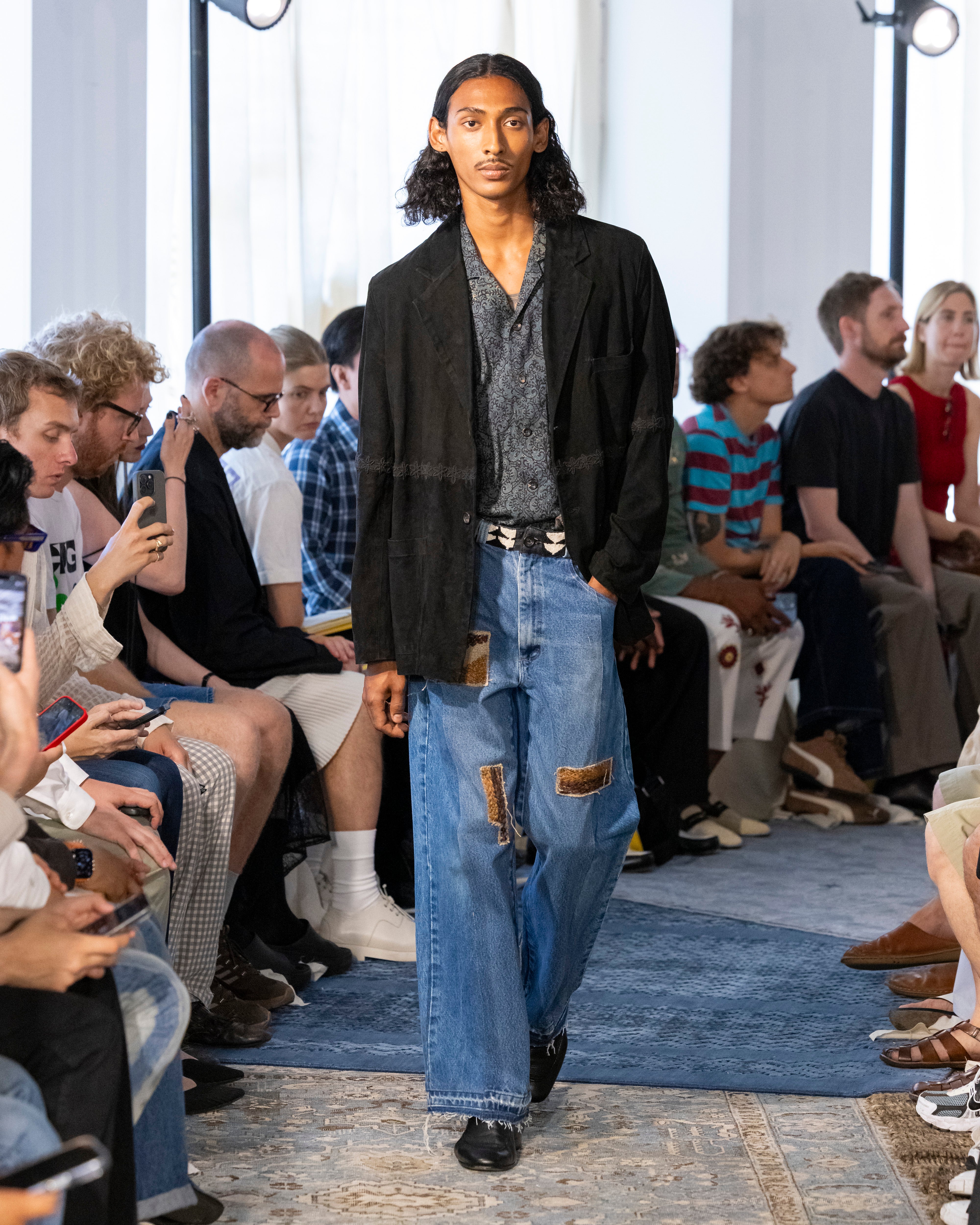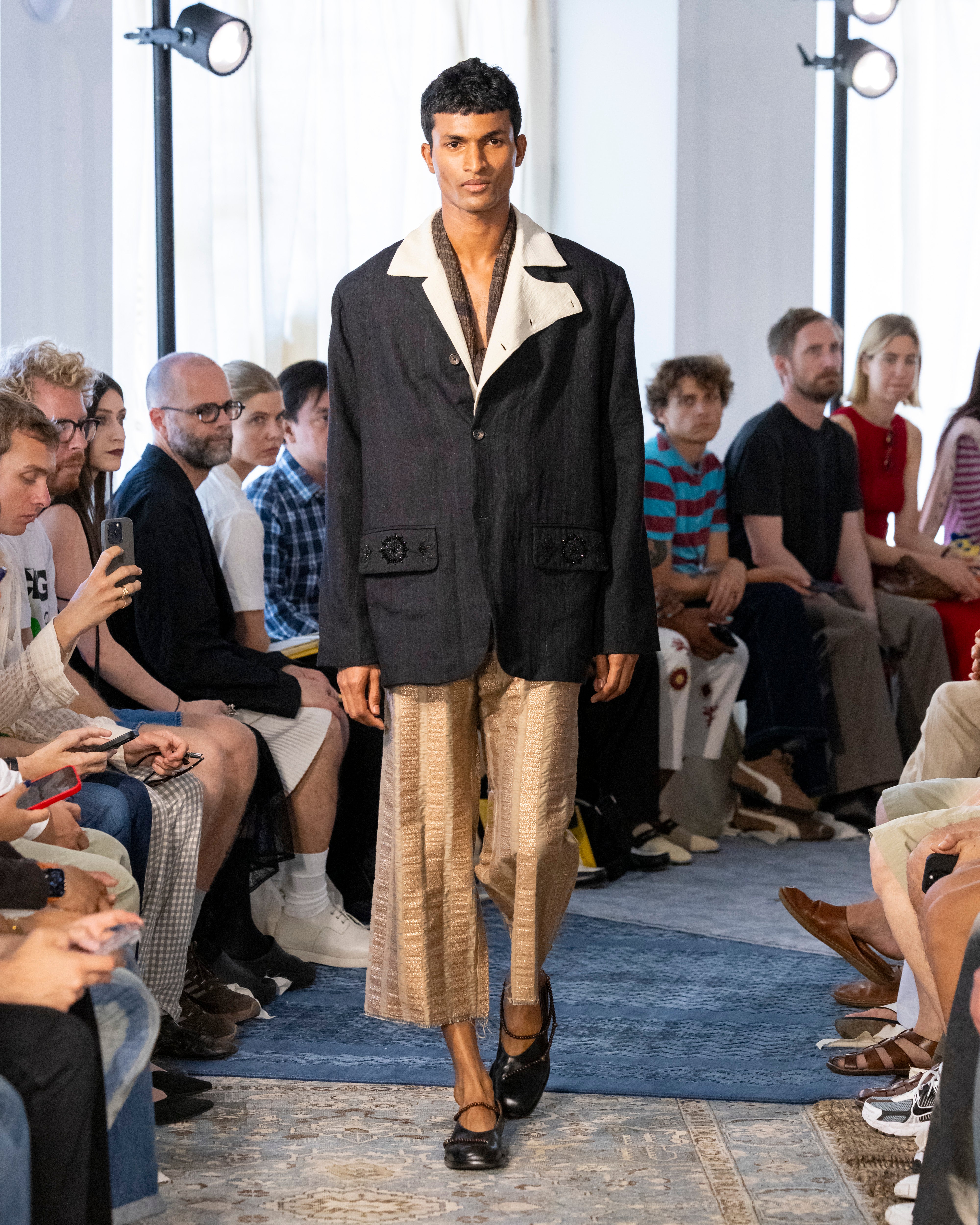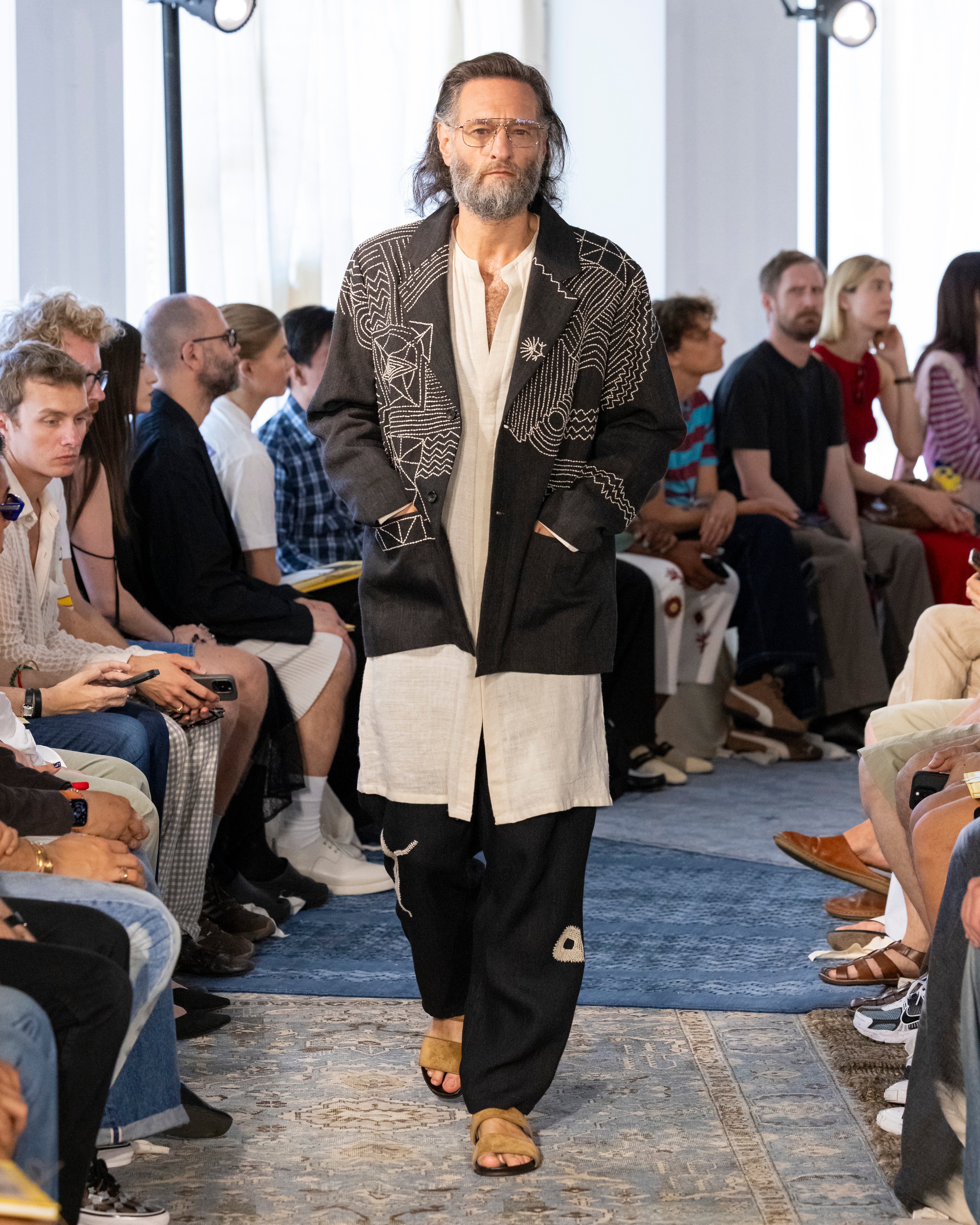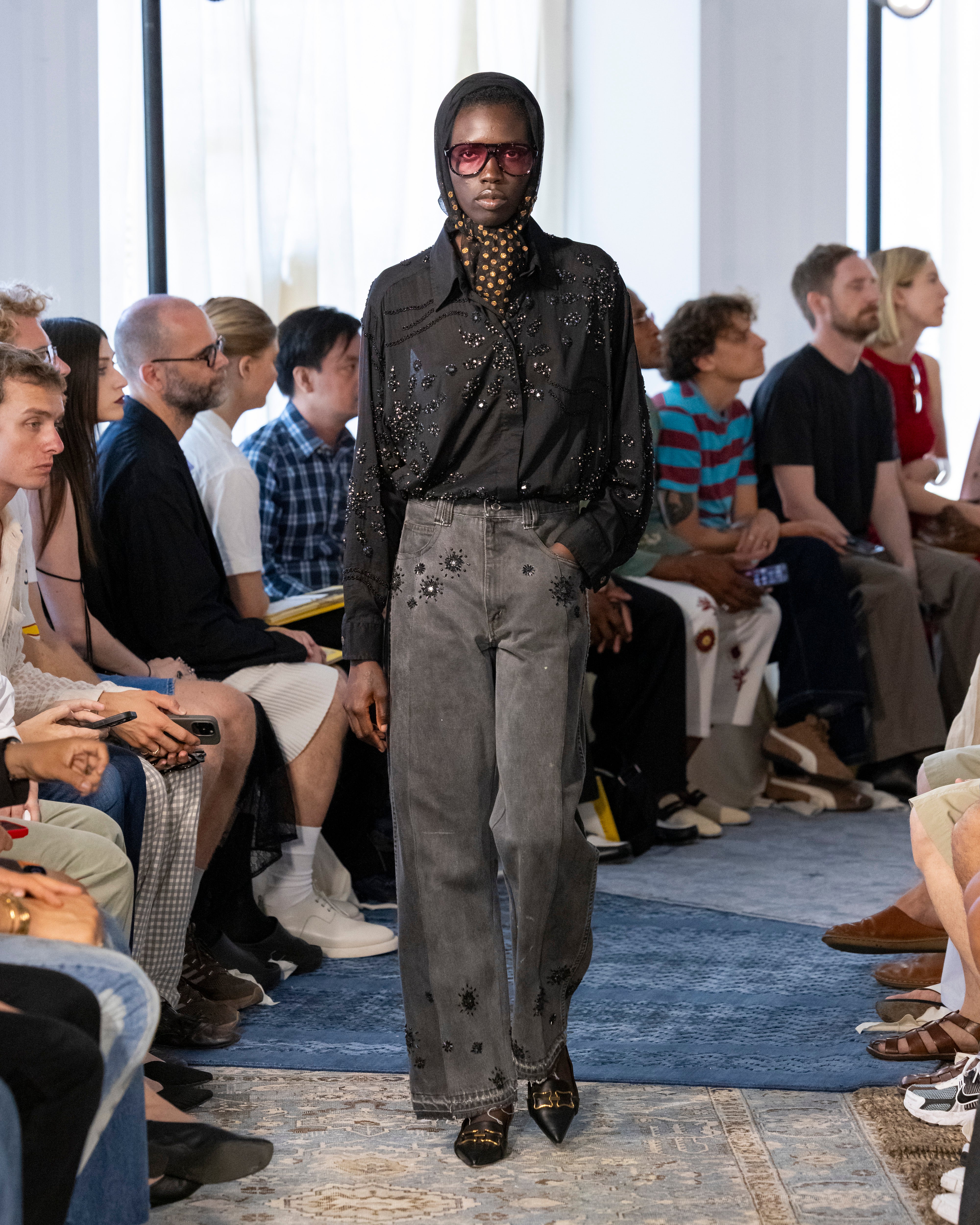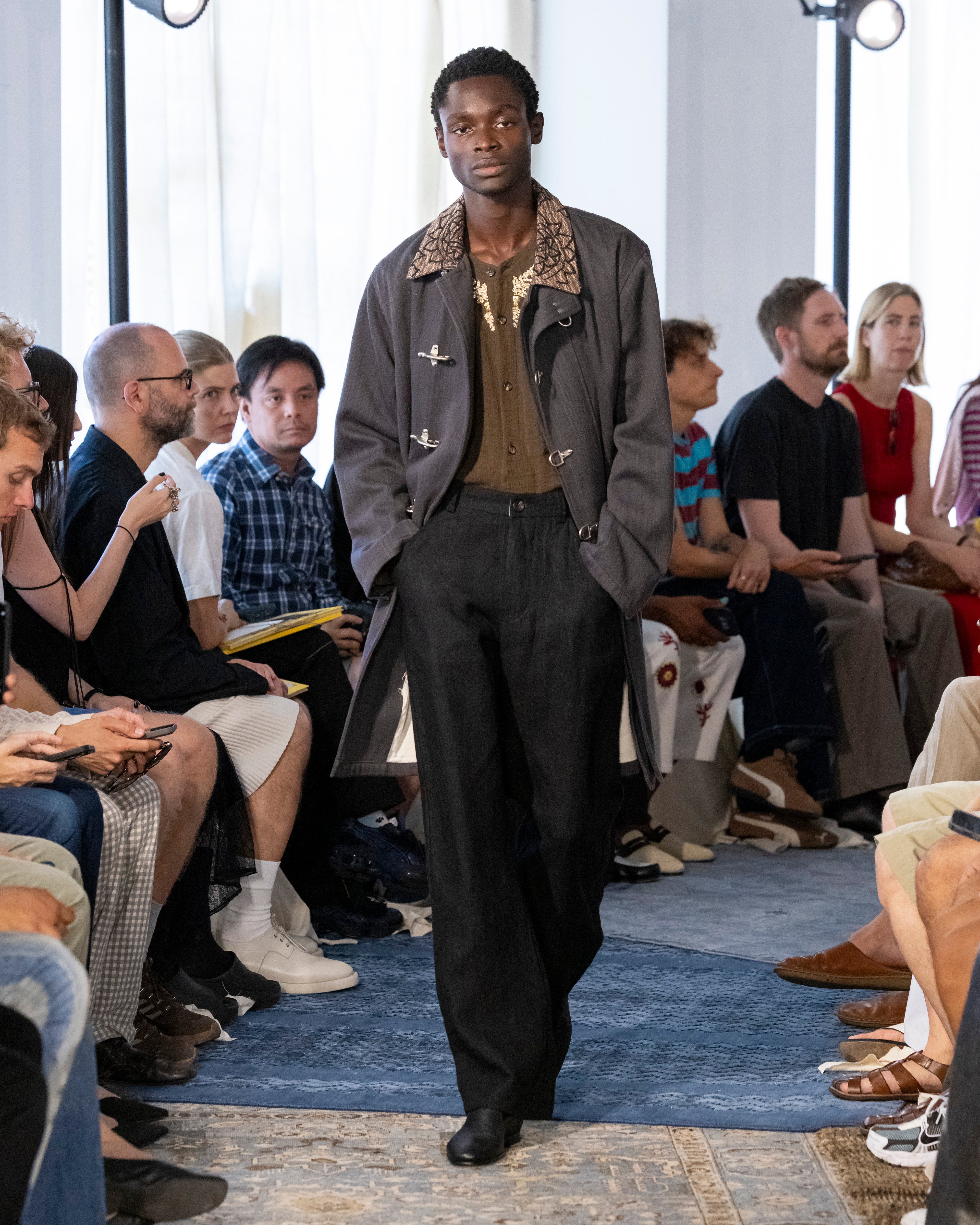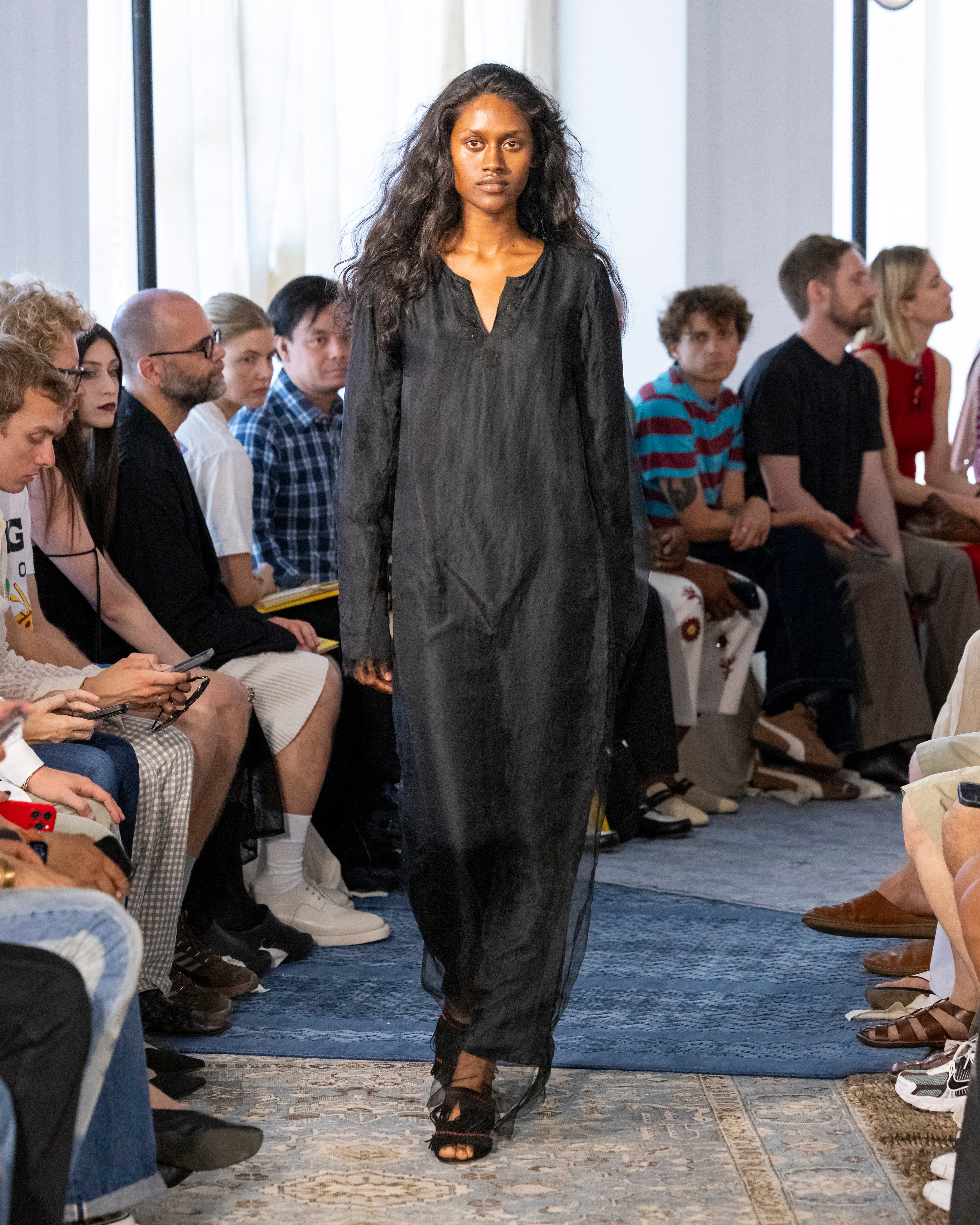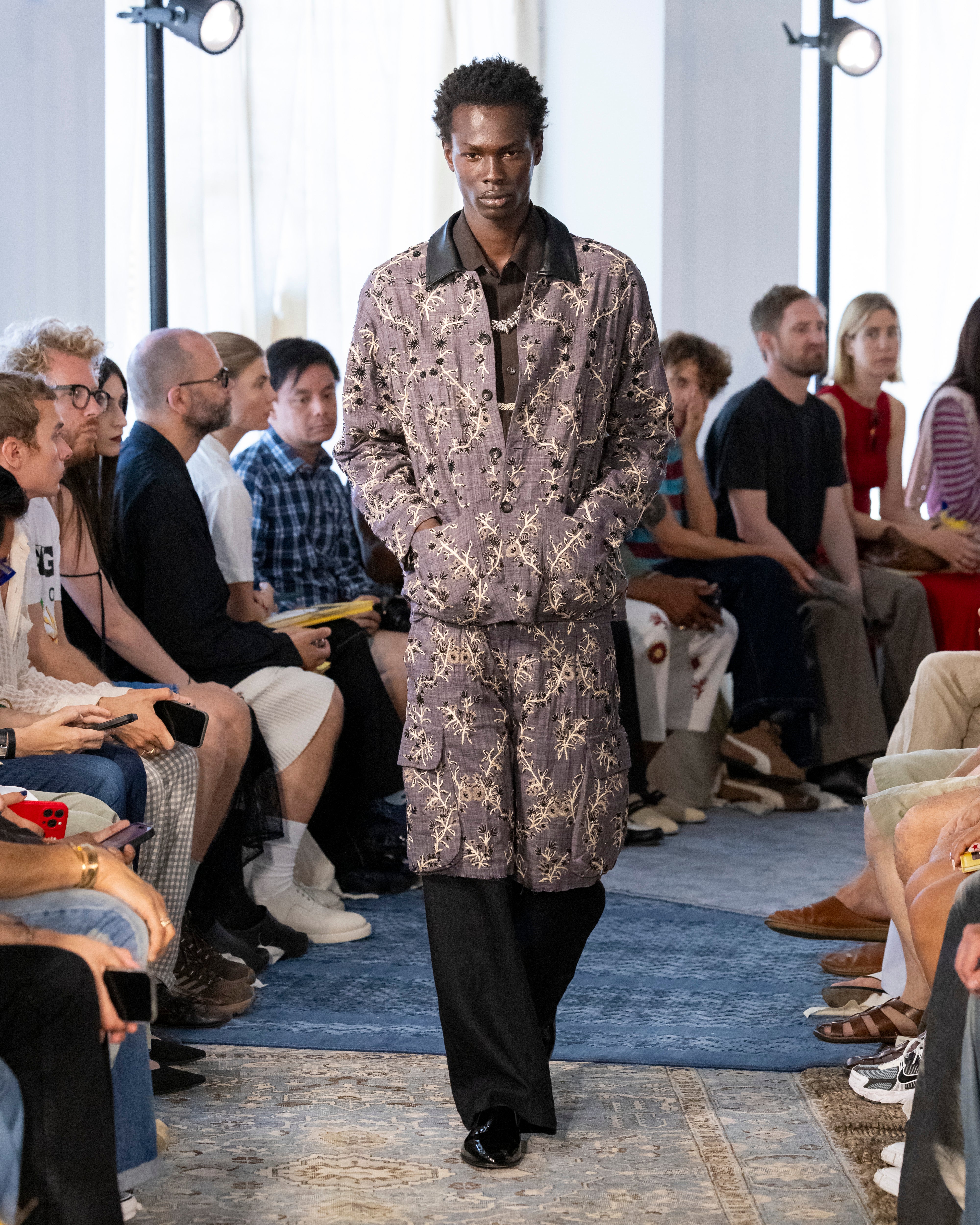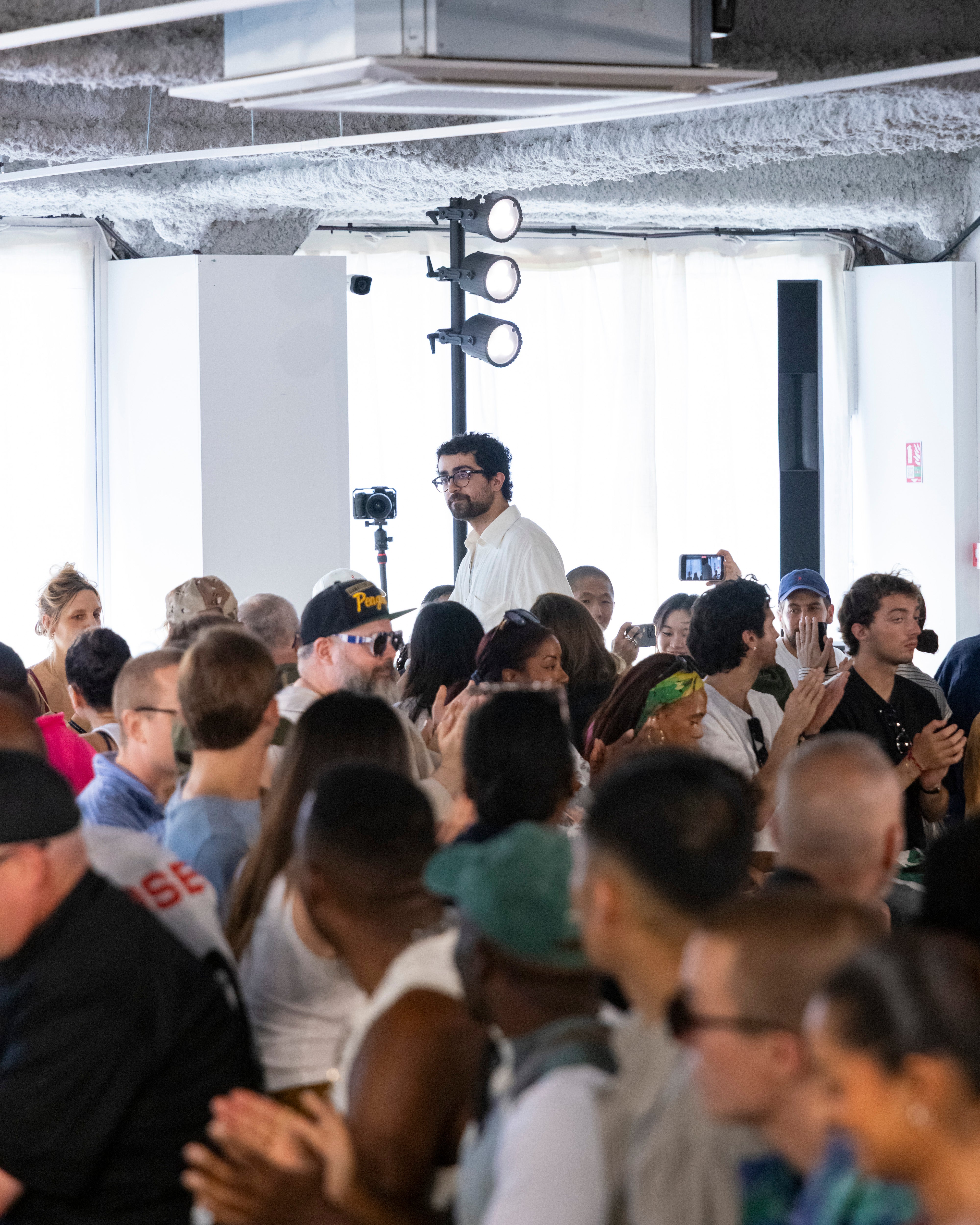
SS26 How To Make It In India
There is an innate quality to the way craftspeople dress. It is as if they have an understanding of the textile that most of us will never be fortunate enough to appreciate or achieve, one that can only be achieved through proximity to the process. When I’m traveling around the country to find and develop new fabrics you end up seeing a lot of interesting things. Six months ago, I bought a Leica and since then on every trip to a different artisanal cluster, I’ve been documenting the weird, the wonderful and the elegant choices that I find. One gentleman in Gujarat had replaced the buttons on his shirt with an ornamental silver necklace where the pendants had been looped through the placket. Sometimes you’ll see a woman drape a gauzy leheriya fabric over her head to protect herself from direct sunlight. While traveling you’ll find flamboyant burnt orange hair dyes, black blazers over white kurtas with a saffron turban, offensively printed shirts that look so bad that they almost work, heirloom earrings that have patinaed with age. Now why do I find this interesting enough to base the collection on it? Because it doesn’t feel engineered. I would argue that it’s never been easier as a brand to conform to the archetypes of tastefulness. Minimalism and “Quiet Luxury” have created a design hierarchy, one that champions restraint, but one that I believe has been wrongly conflated with good taste. The thought behind the decisions the people I interact with are making aren’t influenced by a TikTok style guide. It feels instinctive to them. It’s not cohesive, but it still belongs. It’s not a curated wardrobe, it’s more alive than that. For the last six months I’ve been chasing this feeling and trying to capture that energy through our clothing.
